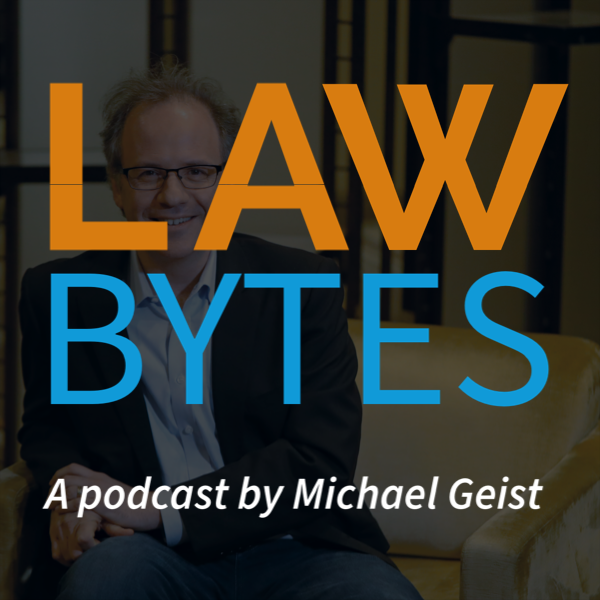Howard Knopf has a terrific post on how Canada could use IP and IP policy to address concerns with the economy.
Knopf on IP and the Economy
December 1, 2008
Share this post
One Comment

Law Bytes
Episode 254: Looking Back at the Year in Canadian Digital Law and Policy
byMichael Geist

December 22, 2025
Michael Geist
December 8, 2025
Michael Geist
December 1, 2025
Michael Geist
November 24, 2025
Michael Geist
November 17, 2025
Michael Geist
Search Results placeholder
Recent Posts
 The Year in Review: Top Ten Posts
The Year in Review: Top Ten Posts  The Law Bytes Podcast, Episode 254: Looking Back at the Year in Canadian Digital Law and Policy
The Law Bytes Podcast, Episode 254: Looking Back at the Year in Canadian Digital Law and Policy  Confronting Antisemitism in Canada: If Leaders Won’t Call It Out Without Qualifiers, They Can’t Address It
Confronting Antisemitism in Canada: If Leaders Won’t Call It Out Without Qualifiers, They Can’t Address It  “Shock” and the Bondi Beach Chanukah Massacre
“Shock” and the Bondi Beach Chanukah Massacre  The Catch-22 of Canadian Digital Sovereignty
The Catch-22 of Canadian Digital Sovereignty

According to the American Recovery and Reinvestment Act of 2009 is a federal public law passed by the 111th United States Congress and signed into law by President Barack Obama. Its legislative history had three versions, the first approved by the House of Representatives, a second version approved by the Senate. The final version, a conference version resulting from negotiations of House and Senate leadership was approved by both houses of Congress on February 13, 2009, and signed on February 17 by the President. Congressional negotiators announced on February 11, 2009, that they had completed the conference report of the bill. The 1,071 page Conference Report with final handwritten provisions was made available to the public late on February 13. On February 13, 2009, at 2:24 p.m., the Conference Report was voted on and passed as Roll Call Vote 70 by the House with 246 Yeas and 183 Nays. The vote was largely along party lines with all 246 Yea votes given by Democrats and the Nay vote consisting of 176 Republicans and seven Democrats. The payday loan for the nation’s economy is on its way. The Obama stimulus bill has been passed and signed. Plans are underway on how to deploy it, and the $787 billion in funds that it will disperse in order to stabilize markets, encourage lending, and create jobs. The government sized payday loan will also be used to improve broadband access, improve schools and universities, and invest in green technology, ushering in more green industry. Hopefully, it will also create more of the kinds of jobs where a payday loan isn’t really a worry.